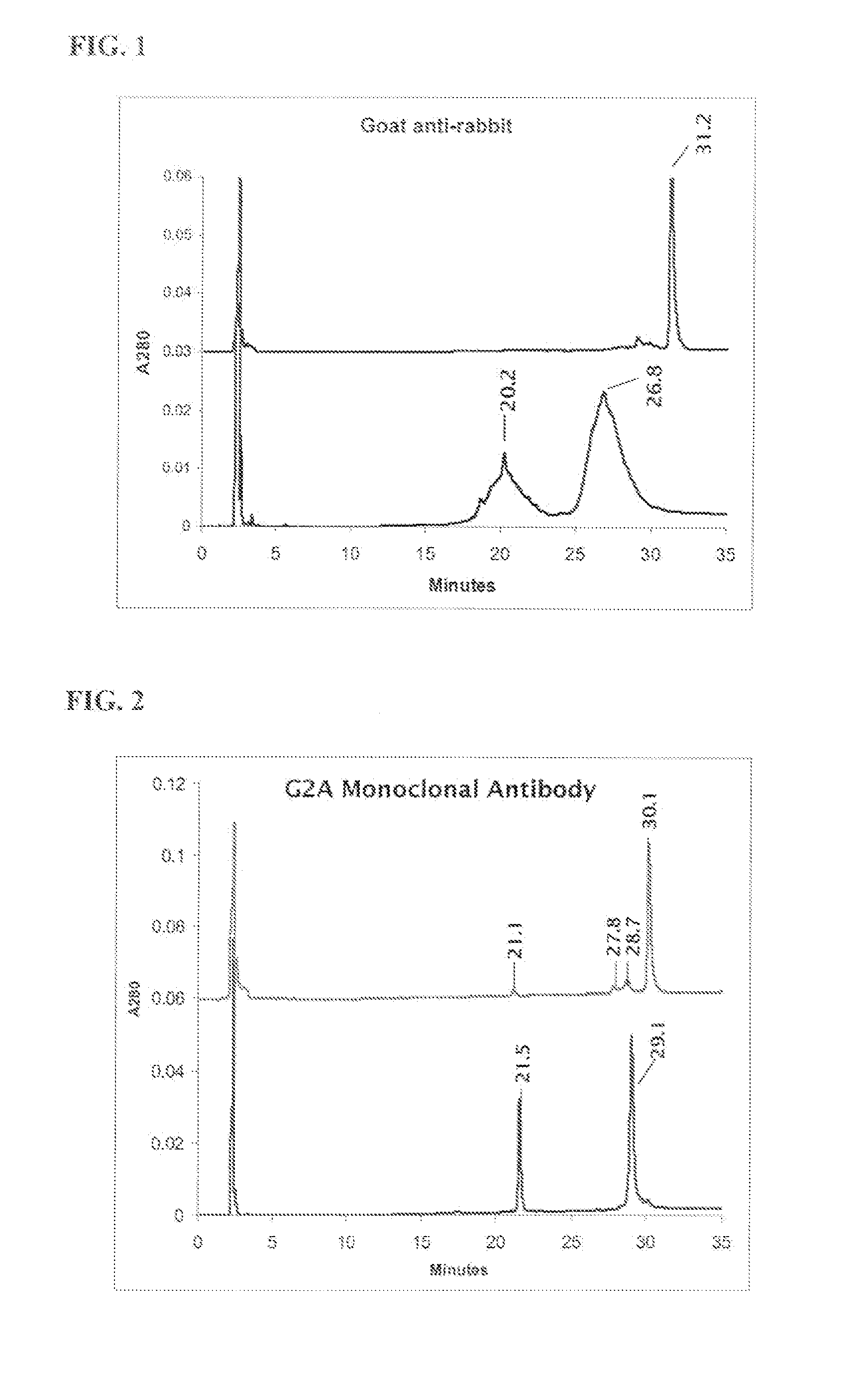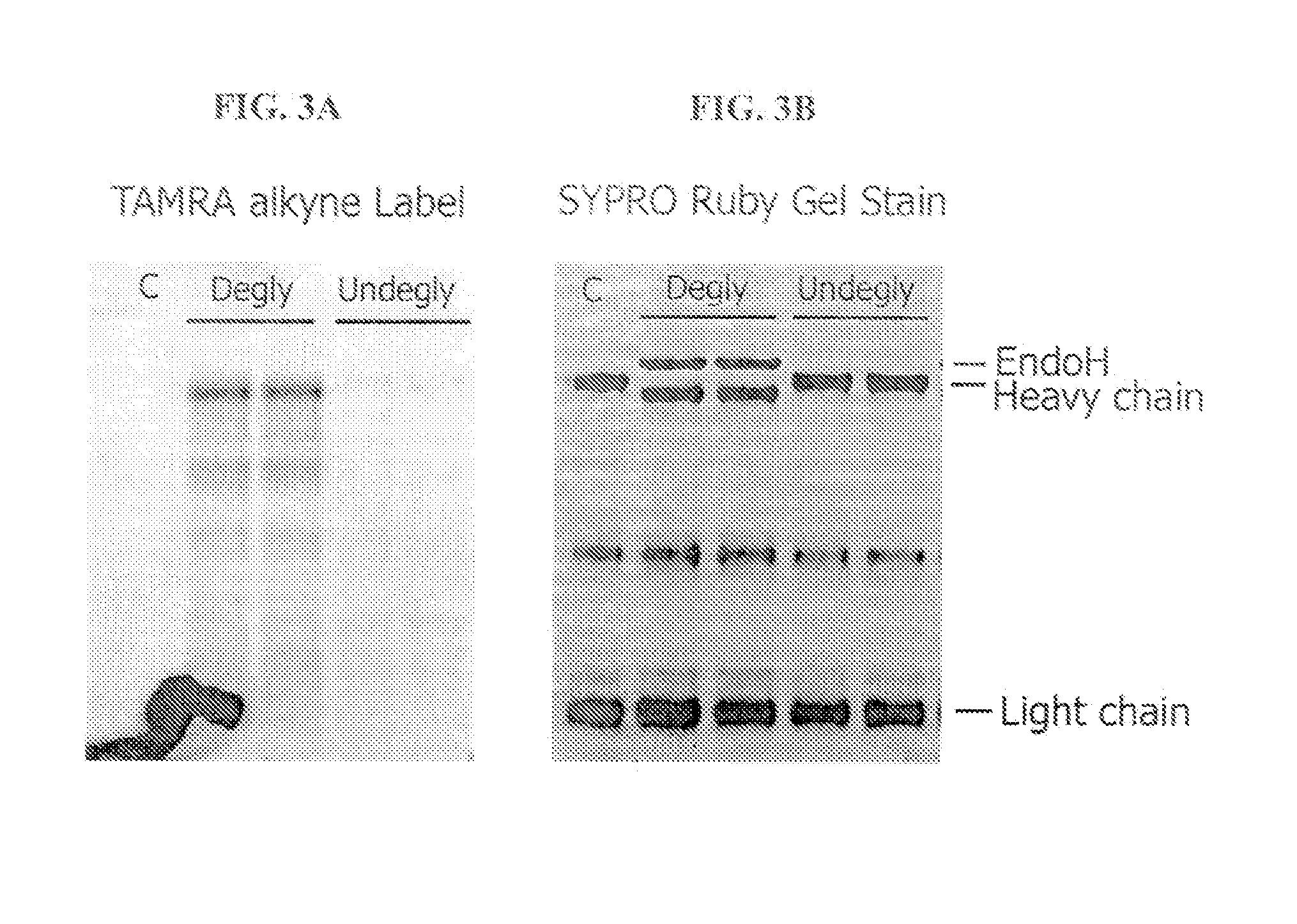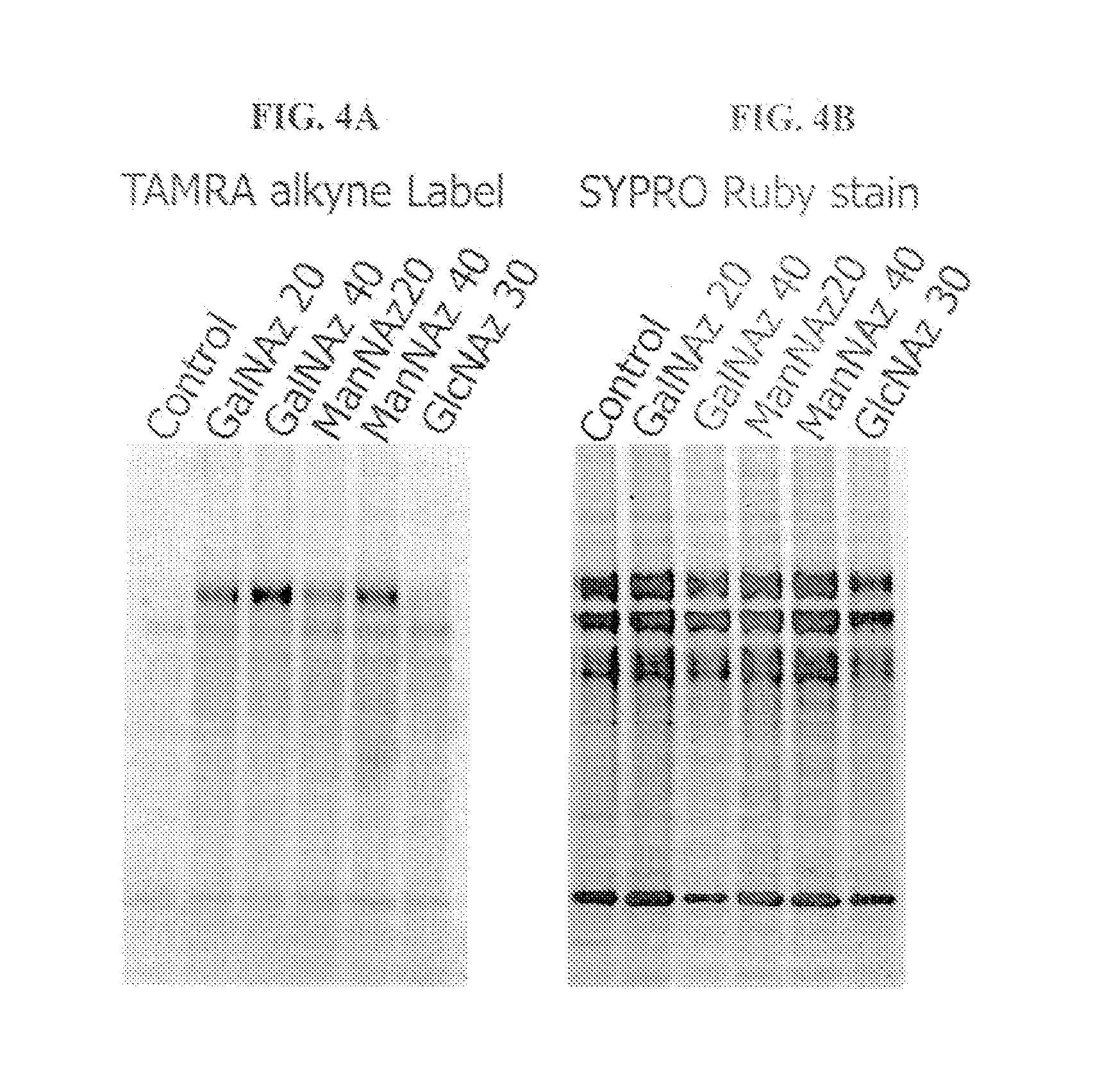Oligosaccharide modification and labeling of proteins
a technology of protein and oligosaccharide, applied in the field of protein method, can solve the problem of difficulty in determining how many labels are present on each igg
- Summary
- Abstract
- Description
- Claims
- Application Information
AI Technical Summary
Benefits of technology
Problems solved by technology
Method used
Image
Examples
example 1
[0233] HPLC verification of monoclonal and polyclonal antibodies with and without oligosaccharide cleavage by Endo H glycosidase.
[0234] Deglycosylation reaction: To 90 μL reduced and alkylated antibody (1 mg / ml) add 40 μL 0.5 M sodium citrate pH 5.5 and 10 μL EndoHf, (1,000,000 U / mL, New England BioLabs). Incubate for 48 hours at 37° C. with rocking. Samples were centrifuged to remove precipitate and then injected directly onto the HPLC. Reversed-phase HPLC was performed on an Agilent Zorbax 300SB-CN column (4.6×150 mm, 3.5 μm) at 75° C. with a flow rate of 0.8 mL / min using a Waters 600E LC system. The mobile phase included water with 0.1% TFA in solvent A and 80% n-propanol, 10% acetonitrile, 10% water with 0.1% TFA in solvent B (conditons of Rehder et al., J. Chrom. A, 1102 (2006) 164-175). Separation was accomplished using a linear gradient from 20 to 40% B over 30 min. Results are depicted in FIG. 1 and FIG. 2.
example 2
Enzymatic Labeling of Chicken Anti-goat Antibody with and without Oligosaccharide Cleavage by Endo H Glycosidase
[0235] Chicken anti-goat IgG was washed into 50 mM MES pH 6.5 buffer on a VivaSpin 5000 MWCO filter column. For the deglycosylation reaction, an aliquot of washed IgG at 1 mg / mL was incubated 24 hours at 37° C. in 50 mM MES pH 6.5 containing 47.5 U / μL Endo H (New England BioLabs). Washed (undeglycosylated) or EndoHf digested IgG was then azido-labeled with the Click-iT O-GlcNAc enzymatic labeling kit using nondenaturing conditions: 0.5 mg / ml IgG in 50 mM MES pH 6.5, 120 mM NaCl, 11 mM MnCl2, 0.1 mM ZnCl2, 50 μM UDP-GalNAz, 5 U / mL Antarctic phosphatase, and 0.65 mg / mL GalT enzyme, overnight incubation at 4° C. The samples were purified through P10 sizing resin packed into a 0.5 mL spin column into 50 mM Tris pH 8. Collected fractions containing antibody were then labeled with the TAMRA Click-iT™ detection kit (C33370) and purified again through P10 sizing resin packed into...
example 3
Metabolic Labeling of Antibodies with Azido Sugars
[0236] Mouse M96 hybridoma cells were fed the azido sugar analogues, Ac4GalNAz, Ac4ManNAz or Ac4GlcNAz for five days. The cell supernatant (containing the azido-labeled monoclonal antibody) was collected and proteins were precipitated in chloroform / methanol. Precipitated pellets were resolubilized with 50 μL of 1% SDS, 100 mM TRIS pH 8, labeled with the TAMRA Click-iT™ detection kit (C33370) and 1 μg was analyzed on a 4-12% BIS-TRIS gel using MOPS buffer. The gels were imaged on the BioRad FX imager using the 532 nm laser and 555 nm long pass emission filter (FIG. 4A). The gels were post-stained with SYPRO® Ruby protein gel stain and imaged using the 488 nm laser and 555 nm long pass emission filter (FIG. 4B).
PUM
| Property | Measurement | Unit |
|---|---|---|
| fluorescent | aaaaa | aaaaa |
| fluorescence- | aaaaa | aaaaa |
| HPLC | aaaaa | aaaaa |
Abstract
Description
Claims
Application Information
 Login to View More
Login to View More - R&D
- Intellectual Property
- Life Sciences
- Materials
- Tech Scout
- Unparalleled Data Quality
- Higher Quality Content
- 60% Fewer Hallucinations
Browse by: Latest US Patents, China's latest patents, Technical Efficacy Thesaurus, Application Domain, Technology Topic, Popular Technical Reports.
© 2025 PatSnap. All rights reserved.Legal|Privacy policy|Modern Slavery Act Transparency Statement|Sitemap|About US| Contact US: help@patsnap.com



